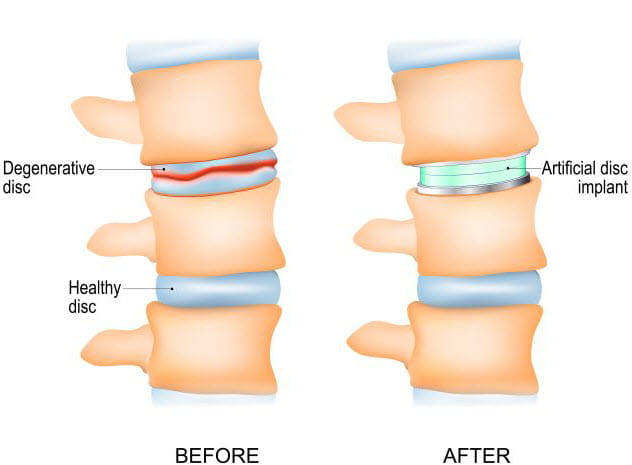Cervical disc replacement - is it for you?
September 29, 2022
Home > About > News & Media > Story Center
By David Yam, MD
Disc problems such as degenerative disc disease or a herniated disc can be the result of an accident, over-use or simply, wear and tear from daily life. Often, treatment starts with rest, heat, anti-inflammatory medications, physical therapy and lifestyle changes. However, if a nerve is pinched or if the pain is severe enough, a doctor may recommend surgery to treat the disc problem. A surgeon can provide potential solutions that allow for personalized care and risk reduction.
What is cervical disc replacement?
Discs are the spaces between our neck vertebrae that allow for motion, flexibility and rotation. If discs become unhealthy, spines become more rigid and often, more painful.
Disc replacement surgery is a modern way to remove arthritic and failed discs and replace them with engineered discs that mimic the motions of a healthy disc. The technique to replace an unhealthy disc is simple but requires experience with the technology and expertise with the approach.
Cervical disc replacement should be considered whenever a patient might benefit from motion preservation over fused bones (cervical fusion). It is an option for common problems such as a herniated disc, neck arthritis or disc degeneration, especially in patients younger than age 65.
Advantages of cervical disc replacement
The advantages of disc replacement are many and include:
• Outpatient surgery for most patients.
• Less recovery time.
• Statistically better results compared to fusion.
• Lower risk of reoperation at the same cervical level.
• Lower risk of reoperation at any other cervical level in the neck.
• Disc replacements last a long time with very little chance of revision.

The challenges of disc replacement
• Certain types of arthritis do not respond well to disc replacement.
• Instability or looseness in the neck caused by fracture or degeneration can limit the options of some patients.
Cervical disc replacement surgery
The surgery is performed by a small, one inch incision made in the front of the neck. A microscope is used to remove the diseased disc; bone spurs and nerve compression becomes alleviated. An artificial disc is then inserted and carefully placed near the midline and at the proper depth. The surgery is usually completed as an outpatient procedure and takes less than an hour.
Aftercare and recovery
Most patients go home the same day and need to follow restrictions for up to six weeks after surgery. Generally, patients will need some help after surgery but usually not for a long period of time. There may be some swelling and difficulty swallowing which stops fairly quickly. Pain is typically well-managed with NSAIDS such as ibuprofen. After three months, most patients have completed all follow-up and can resume most activities.
Many surgeons do not offer this technology and recommend fusion. It is imperative that you seek out a surgeon performing disc replacement before considering a fusion to see if it is a viable option.
Call 503-944-6300 to schedule an appointment

